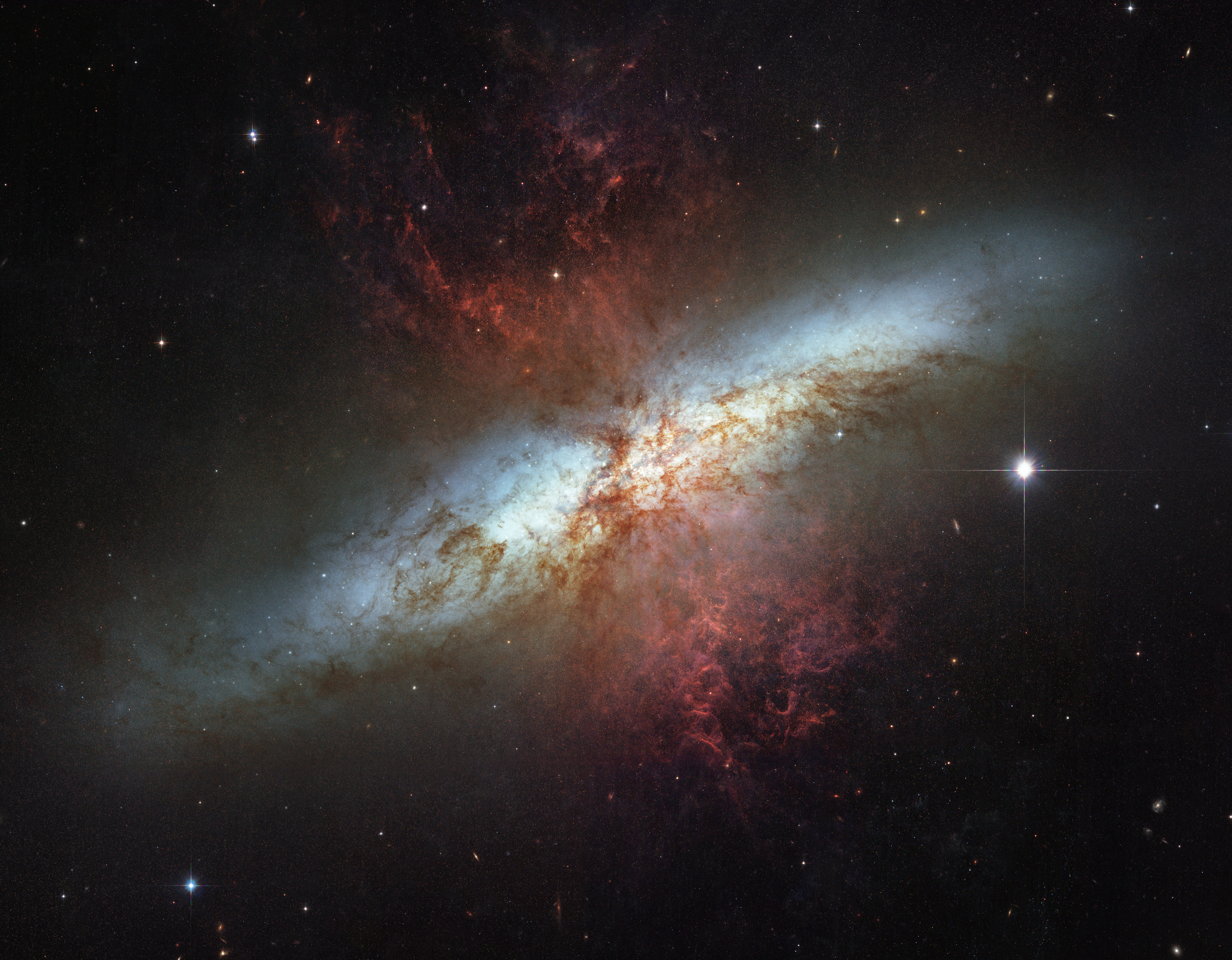Last November, astronomers saw a quick gamma-ray explosion lasting one-tenth of a second. Then, 13 seconds later, they knew it came from galaxy M82, which is just 12 million light-years away. Basically next door, as galaxies go. This suggested they had witnessed something quite rare, a flare from a magnetar.
A magnetar is a special type of neutron star with an incredible magnetic field. Neutron stars are the end product of certain supernovae. They are the extremely dense and degenerate core of dead massive stars. Short gamma-ray bursts are usually caused by neutron star collisions, which release a lot of energy and gravitational waves, but the team suspected an even rarer phenomenon involving a magnetar.
Over the last 50 years, there have been only three other known flares from magnetars, all releasing short gamma-ray bursts. They were seen either from our own galaxy or the Large Magellanic Cloud, the largest and one of the closest galactic companions to the Milky Way. This is the fourth and most distant yet, but still so much closer than any other short gamma-ray burst.
“We immediately realised that this was a special alert. Gamma-ray bursts come from far-away and anywhere in the sky, but this burst came from a bright nearby galaxy,” lead author Dr Sandro Mereghetti of the National Institute for Astrophysics (INAF–IASF) in Milan, said in a statement emailed to IFLScience.
If that were the case, this would be the first detection of a magnetar in a galaxy beyond the sphere of influence of the Milky Way, and the team used many telescopes to confirm whether this was what they were seeing.
M82 as seen by Hubble.
Image Credit: NASA, ESA and the Hubble Heritage Team (STScI/AURA). Acknowledgment: J. Gallagher (University of Wisconsin), M. Mountain (STScI) and P. Puxley (NSF)
From the original alert from the Integral satellite of the European Space Agency (ESA), they employed observatories in both X-rays, such as ESA’s XMM-Newton, and in the visible range to see the expected aftermath of neutron star collisions. The team also checked gravitational wave detectors. They didn’t see any telltale signs.
“XMM-Newton’s observations only showed the hot gas and stars in the galaxy. If this explosion had been a short gamma-ray burst, we would have seen a fading source of X-rays coming from its location, but this afterglow was not present,” explained co-author Dr Michela Rigoselli, also from INAF.
“Using ground-based optical telescopes, including the Italian Telescopio Nazionale Galileo and the French Observatoire de Haute-Provence, we looked for a signal in visible light, starting only a few hours after the explosion, but again we did not find anything. With no signal in X-rays and visible light, and no gravitational waves measured by detectors on Earth (LIGO/VIRGO/KAGRA), we are certain the signal came from a magnetar,” concluded Mereghetti.
M82 is considered a starburst galaxy, a galaxy which is producing a lot of stars. Some of those stars live fast and die young, going supernova and leaving behind neutron stars – and, in some cases, magnetars. These objects have a magnetic field one trillion times more powerful than that of our planet. It might be possible that it is a temporary feature that only young neutron stars have.
The discovery suggests that starburst galaxies such as M82 are great places to look for magnetars, and astronomers will keep an eye out for more flares from such a fascinating galaxy.
The study is published in the journal Nature.
Source Link: Flash Of Gamma Rays In Nearby Galaxy Came From Stupendously Magnetic Dead Star
